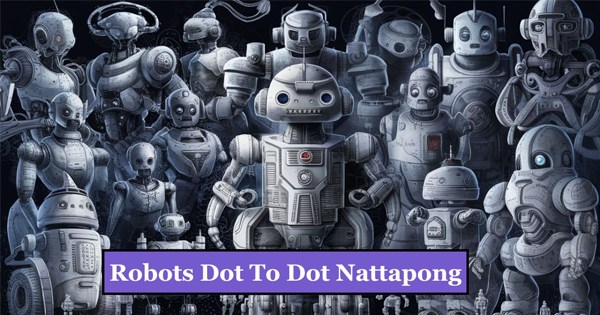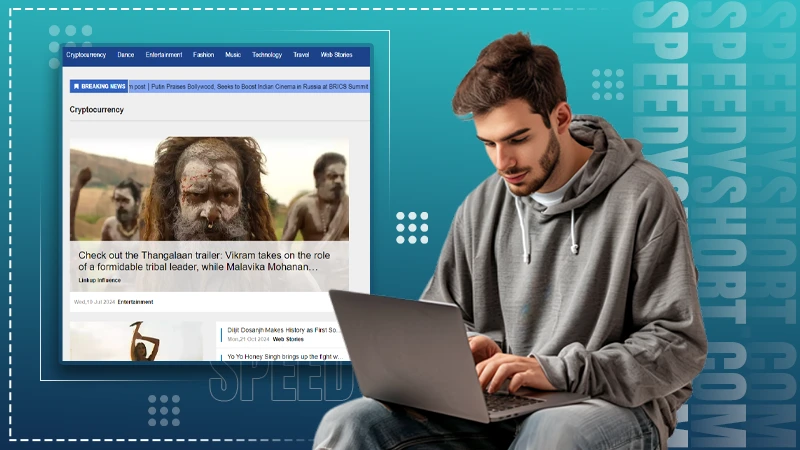Ans: Robots Dot to Dot Nattapong is an interactive robotics project. It utilizes robots to create dot-to-dot puzzles.
Connecting Kids with Robots: Exploring Robots Dot To Dot Nattapong Project

Imagine a world where kids can connect with robots in a fun and imaginative way. That’s where Dot To Dot Nattapong comes into the picture.
At its core, Robots Dot to Dot Nattapong is an exciting interactive robotics project that brings the fun of dot-to-dot puzzles into the modern age of robotics and AI.
The Robots Dot To Dot Nattapong project opens up this exciting opportunity and invites children to explore the art of robotics through engaging activities.
With each dot they connect, young minds not only create dynamic robotic figures but also unlock new possibilities for learning and creativity.
Since technology is taking over, introducing children to robotics has become more vital. Also, learn about Ztec100.com by reading this article.
Are you also fascinated by the blend of technology and creativity? Join us throughout the article to explore how robotics can transform traditional puzzles into engaging educational tools and artistic experiences.
Understanding “Robots Dot to Dot Nattapong”
“Robots Dot to Dot Nattapong” is not solely a recreational activity. In fact, it is a project that uses robots to draw dot-to-dot puzzles by combining technology with art and education.
The aim behind the creation of this innovation is to demonstrate the capabilities of AI and robotics in a fun and educational manner.
Each dot represents a component or function within the robot. Picture this, as they progress through the activity, they will learn about the parts of the robot. For instance, sensors, motors, and circuits.
Doing so, deepen their understanding of how robots work. Other than that, this hands-on approach encourages critical thinking and also nurtures an interest in STEM fields from an early age.
How is this possible? Because kids will no longer see robots as machines, they will start to envision themselves as creators.
Technical Breakdown of Dot To Dot Nattapong Project
The Dot To Dot Nattapong project embodies a fascinating intersection of different techniques as follows:
- Software Components: Its software architecture includes a main control program written in languages like Python or C++. Apart from this, Essential libraries for robotics are used. For example, ROS (Robot Operating System).
Also, to enable precise drawing, algorithms for pathfinding and movement control are integrated.
- Hardware Components: It includes microcontrollers (e.g., Arduino or Raspberry Pi), sensors, and motors. The microcontroller coordinates inputs from sensors and controls the motors.
In this project, each of the components is chosen for its reliability and compatibility with the overall system.
Both software components and hardware components are integrated to ensure the proper functioning of the Dot To Dot Nattapong project. To make it clear, sensors detect the position of the robot and send data to the microcontroller.
The microcontroller then processes this data and adjusts the motors’ movements accordingly.
How to Build Robots Dot To Dot Nattapong Project?
Building the Robots Dot To Dot Nattapong can be an exciting journey for kids and adults alike. See how to build Robots Dot To Dot Nattapong:
- Gather all the materials required such as microcontrollers, sensors, motors, and wires, and build a base for the robot.
- Now, follow the assembly instructions and make sure each component is securely attached.
| Quick Tip 💡: You can use diagrams to visualize each step and avoid common pitfalls. |
- Once the structure is ready, integrate electronic components like motors and sensors into their designated spots. Also, see to it that the wiring is neat to avoid confusion later.
- Programming comes next! Write the control program using Python or C++.
- Bring in code snippets for key tasks like movement control and sensor data processing.
- Troubleshoot common issues like sensor calibration and motor alignment (if any).
- Test each component individually to see if all the components function correctly.
- Adjust the sensors to accurately detect positions or movements and motor settings to maintain harmonious and accurate connections between dots. That’s it.
Watch as your creation comes to life through teamwork and creativity!
Real-Life Applications of Robots Dot To Dot Nattapong
Robots Dot To Dot Nattapong can be applied to serve various purposes. For example:
- Entertainment and Art:
The application of Dot To Dot Nattapong extends to interactive art exhibits where robots create dot-to-dot artworks.
Simply put, this innovative approach can be used in entertainment settings to engage audiences with technology. This demonstrates the fusion of entertainment settings to engage audiences with technology.
- Educational Use:
Robots Dot To Dot Nattapong is being used as an educational tool to teach students about science, robotics, coding, technology, engineering, and math (STEM) subjects.
Apart from this, it provides hands-on learning experiences that allow students to understand complex concepts through practical application.
- Future Prospects: There is a growing interest in using robots, future developments can include more complex algorithms and AI integration.
As the global population continues to advance, there is a need for enhanced solutions that could allow for more intricate and varied puzzles. Therefore, expansion into interactive art and educational tools is possible.
Expert Opinions and Insights on Robots Dot To Dot Nattapong
Experts in robotics and education are increasingly recognizing the value of initiatives like Robots Dot To Dot Nattapong. They highlight its potential to bridge theoretical knowledge with hands-on learning experiences.
Their perspective on the future of such projects in education and art highlights the technical challenges and innovations involved.
In addition, Robots Dot To Dot Nattapong highlights contributions from the tech community, like code improvements and design tweaks.
Moreover, educators advocate for integrating such programs into school curriculums. They believe these creative approaches not only enhance problem-solving abilities but also promote teamwork among young learners.
Benefits of Introducing Kids to Robots
From interactive toys and games to educational tools, Dot To Dot Nattapong has become a valuable resource for engaging kids in technology.
There are numerous benefits for children who are exposed to robots at an early age. Some of them are as follows:
- Engaging Kids in Technology:
The main reason to introduce kids to robots is to engage them in technology.
Today, children need to be familiar with technology from a young age. Introducing kids to robots can spark their interest and curiosity in technology and encourage them to explore further.
- Educational Benefits for Classrooms:
They offer a hands-on approach that appeals to students of all ages and learning styles.
With the help of robots, teachers can create interactive lessons that make complex concepts easier for students to grasp.
- Enhance Fine Motor Skills: Many robots require hands-on interaction, such as assembling pieces or manipulating buttons and sensors. These activities can help develop fine motor skills in children.
- Promote Creativity and Imagination:
With Dot To Dot Nattapong, kids can design, build, and customize their own robots.
By giving them the freedom to control and customize their robots, kids can let their imaginations run wild and come up with unique ideas.
- Introduce Sequencing and Problem-Solving:
Programming a robot involves breaking down tasks into smaller steps and sequencing them in the correct order.
This whole procedure helps develop critical thinking skills in children as they learn how to break down a problem into smaller parts and solve it systematically.
- Build Confidence and Motivation:
When they see the results of their programming come to life, Dot To Dot Nattapong boosts children’s confidence and motivation.
Also, it can give them a sense of accomplishment and motivate them to take on more challenges.
- Encourage Lifelong Learning: The introduction of robots to kids at a young age can foster a love for technology and learning that can last a lifetime.
Chances are, as they grow old, they may develop an interest in coding, engineering, or other STEM-related fields. Consequently, it can lead to future career opportunities.
Conclusion
Robotics education is becoming vital for the next generation. Introducing kids to concepts like Dot To Dot Nattapong opens a world of creativity and problem-solving.
This interactive project showcases the incredible potential of robotics to create collaborative learning experiences that are both fun and informative.
By working on Dot To Dot Nattapong, your kid not only enhances their coding and engineering skills but also contributes to the growing field of interactive robotics.
Preparing children for this journey ensures they become active participants in an increasingly automated world, ready to tackle whatever challenges lie ahead.
FAQs
Q1: What is “Robots Dot to Dot Nattapong”?
Q2: What programming languages are used in Robots Dot to Dot Nattapong?
Ans: The primary language used in Robots Dot to Dot Nattapong is Python or C++. These languages are utilized to write the control program and integrate robotics libraries and algorithms.
Q3: What are the key components needed to build the “Robots Dot to Dot Nattapong” project?
Ans: Robots Dot to Dot Nattapong include components like microcontrollers, sensors, motors, and a base for the robot. Also, you will need software tools for programming and integrating these components.
Q4: How does the robot know where to move and connect the dots?
Ans: It uses sensors to detect its position and a microcontroller to process this data. Besides this, it follows programmed paths and uses algorithms to precisely control its movements.












